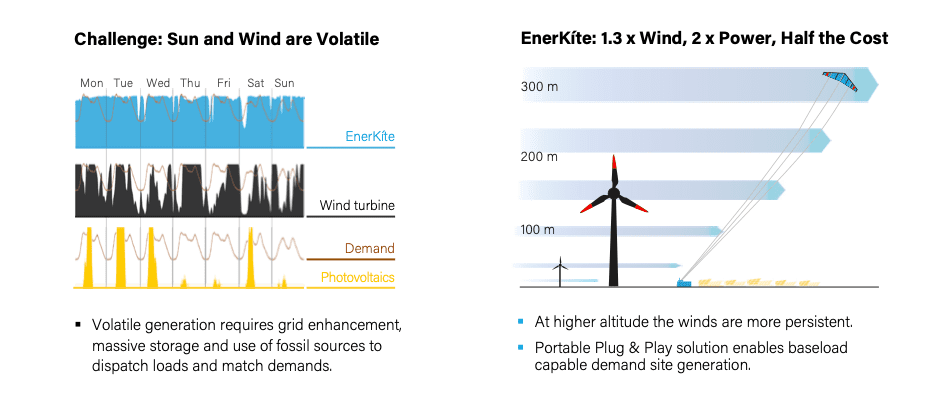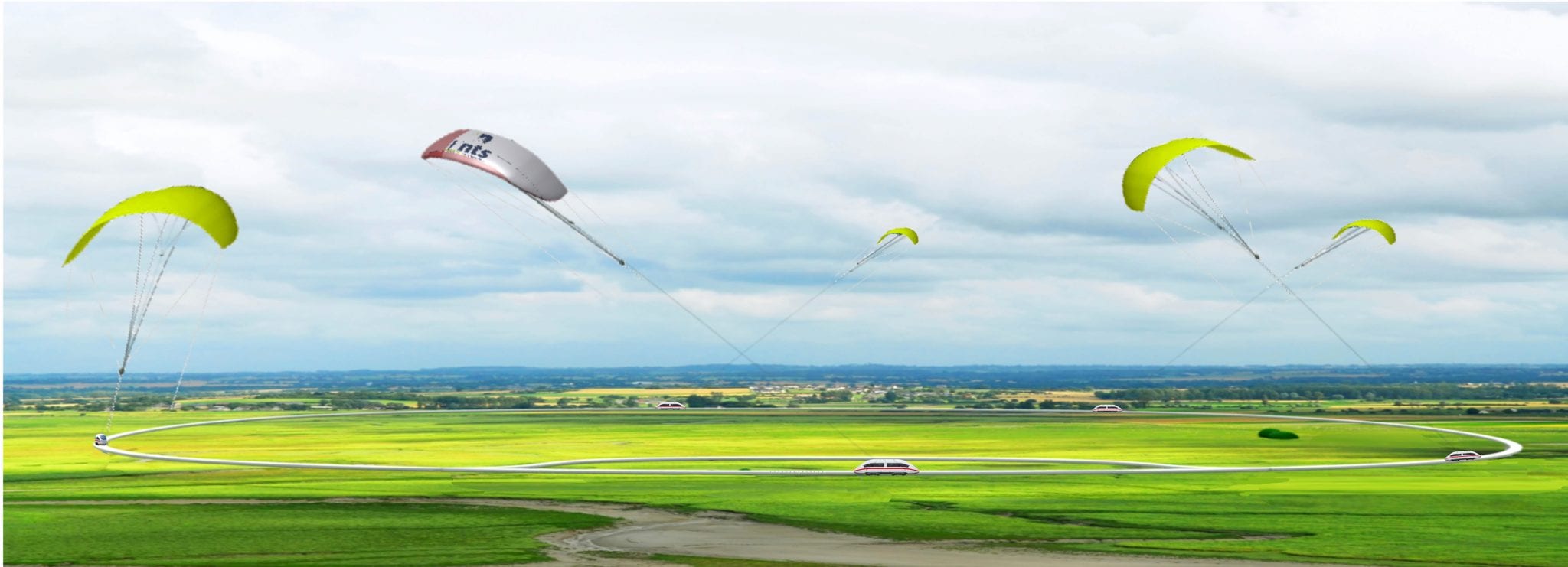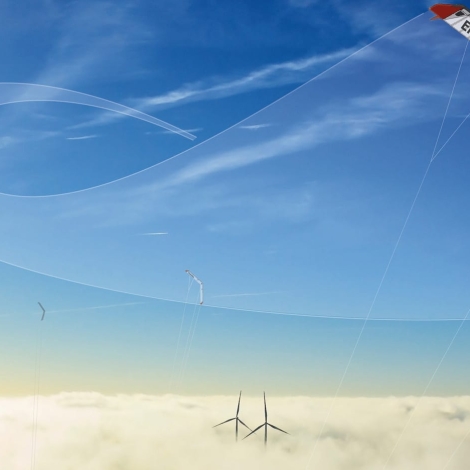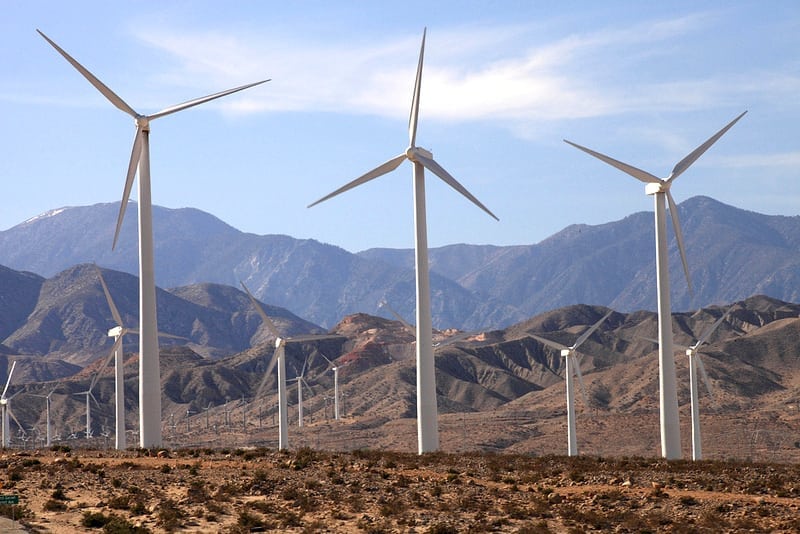The power of wind is perhaps most vibrantly displayed during a community’s kite festival. From India to China, to Guatemala, kite festivals curate an exhibition of color that is built upon a simple yet transformative engineering marvel. Kites have been used over the course of human history for military conquest, for communication with distant communities, and even for navigation at sea. Immortalized now in annual kite festivals referencing local histories and exhibiting cultural beauty, this revolutionary technology has emerged once again as a potentially transformative technology; this time, for the production of renewable energy.

Increasing wind speed across the globe : Altitude from 50m (L), 150 (M) to 200m (R). Image: Global Wind Atlas (CC BY 4.0)
Airborne Wind Energy (AWE) refers to the generation of usable power by devices that access energy from the strong and consistent winds found at high altitudes. Conventional tower-mounted wind turbines have continually tried to grow in height in order to increase their energy output by reaching these exceptional operating conditions, and are yet to go beyond 200m. In order to reduce the 900 tons of steel, 2,500 tons of concrete and 45 tons plastic that goes into building a wind turbine, sending smaller turbines encased in floating shells to heights with greater wind speed seems like a wonderful concept. In the absence of a tower or foundation, AWE systems can be integrated into containers, allowing for low-cost transportation and easy deployment. Energy grids are often the first to fail when disasters like floods, hurricanes, etc. occur, and the AWE system can allow locals and remote communities to regain access to power, clean drinking water, medical facilities and communications at the earliest. While the development and feasibility of these Lighter Than Air Systems are being researched upon, a greater potential for harnessing AWE has been identified in Kite based systems.

These illustrations compare flying-wing kites to traditional wind turbines on towers, and solar power generators. Images courtesy of Enerkite (used with permission)
Research has found that more than half the power of a wind turbine comes from the outer 30 percent of the turbine blade. In essence, kites replace this tip of a wind turbine with a tethered, fast-flying wing like the one shown above. Thus, the principle behind the design of a kite system lies in a flight pattern that mimics the circular motion of a turbine itself, but with a big difference. The kite flies in larger circles at greater heights, resulting in increased energy conversion. To gauge the immense efficiency of this system, the power to surface-area ratio comparison between the maximum power of a PV cell and a realistic value of power density generated by an airborne system indicates a 150 fold difference between the two.

X-Wind Powerplants develops high-altitude kite power generators tethered to a circular railroad track. The result costs less than traditional turbines and has a lower visual profile, the company says. Image courtesy of X-Wind Powerplants, Berlin, Germany
These kites can either have onboard generators with the electricity being transmitted to a station on the ground, or one which uses the traction force to reel and unreel a drum to produce electricity. Kite Power Systems has further improved the drum generator technology to ensure continuous power production. While one kite is in the generation phase the other is in the retraction phase, this ensures continuous production of energy. The optimization does not stop there. The kites do not follow a circular path, but, in fact, a path shaped like a figure eight or the sign for infinity, as seen in the animation below. This flight path is observed to yield greater traction force in the tether and is efficient against the wind.
A control unit is employed to automatically steer the kite on the desired track in response to the readings of the sensors that are placed along with it. This control unit encases thousands of unique parts and requires accurate interaction between the system’s motor, gears, and electronics. As shown in the image below, this control unit can be present a few meters below the kite or on the ground station and can be complemented with one, two, or three ropes. This combination, along with the type of kite being used, has prompted a number of companies worldwide to file patents and commercialize technologies.
KiteGenResearch (KGR), one of the first companies to prototype a ground-gen system, uses two power ropes to control the kite from a control station on the ground. While Kitenergy and SkySails use a concept similar to KGR, EnerKite uses a slightly different kite where the wing is a combination of a rigid glider and a lightweight hang glider. Ampyx power has gone beyond gliders and has developed a drone that carries a wing optimized for power output, having an immense lift capacity. The Swiss company TwingTec too utilizes a drone to turn an on-ground generator but with a different collection of innovative lifting and stabilizing mechanisms. In contrast, Windlift and Makani Power are companies whose drones carry multiple onboard turbines, generating electricity that is sent to the ground station for distribution or storage.
The technological advancements in AWE over the last decade has been astounding. With the increasing capacity of computational power, manufacturing technologies and advanced material research, scientists in this field can turn this ancient technology into one that ensures a sustainable future for the planet.
References
[1] Moritz Diehl, 2013, Airborne Wind Energy: Basic Concepts and Physical Foundations, Green Energy Technology, Airborne Wind Energy, pp 3-22.
[2] Antonello Cherubini, Andrea Papini, Rocco Vertechy, Marco Fontana, 2015, Airborne Wind Energy Systems: A review of the technologies, Renewable and Sustainable Energy Reviews (2015) 1461-1476.
[3] Uwe Ahrens, Moritz Diehl, Roland Schmehl, 2014, Airborne Wind Energy, Green Energy Technology book series.


I have done considerable thinking along these lines. I think that watersport kites should be used initially, thus avoiding much trial and error that is history. Developers should concentrate on cross wind performance, which is the best point of sail for these kites, and allows very high power generation for almost the entire path. I see the ground installation as using ski lift cable technology, to extract high power from a single DC generator. Many more kites, than in above picture, can fly the same crosswind narrow oval path, in unison, generating higher power. I am an experienced engineer and inventor, who would like to work in this area.
Newt, we invite you to look over the job opportunities in kite energy or airborne wind energy. http://energykitesystems.net/AirborneWindEnergy